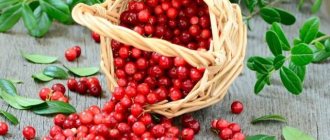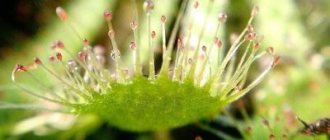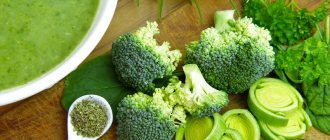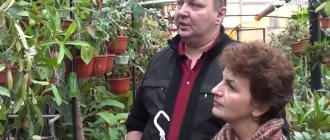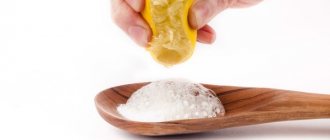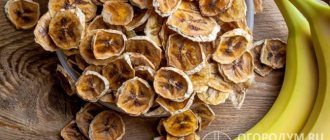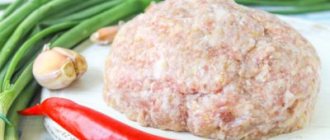“There is a healing power in herbs and flowers for everyone who knows how to unravel their secrets” - these lines from a poem by Robert Rozhdestvensky very accurately describe the value of fragrant herbs that grow abundantly in summer in forests, gardens and meadows. A separate art is to be able to collect these herbs, dry them and make aromatic tea mixtures from them for the winter. Homemade herbal tea has several advantages. You can be completely confident in its quality, add only those components that you like, and with the onset of cold weather, this drink will remind you of hot summer days.
How to brew herbal tea correctly
From time immemorial, people have collected and prepared useful herbs, which they then used for healing purposes. Plants rich in nutrients helped in the treatment of many diseases. To this day, infusions, ointments, and decoctions are prepared from fresh and dried herbs. But the most popular drink is tea. To make it aromatic and tasty, it must be brewed correctly. It is better to do this taking into account the following recommendations.
- Do not use metal, aluminum or plastic containers when brewing herbs; they can spoil the taste of the drink. Take only glass, enamel, earthenware or ceramic dishes.
- Roots, herbs, leaves and inflorescences should not be brewed again, as they have already lost all their benefits, taste and smell.
- The teapot needs to be prepared correctly: pour boiling water into it for 2-3 minutes, then drain the water. During this time the kettle will warm up. Now you can put tea and dried herbs in it.
- The herbal mixture should not be poured with boiling water. Use only hot water. Its temperature should not exceed 90–92°C.
- The drink should be given time to brew, or even better, the kettle should be covered with a thick cloth.
- If you want your tea to combine several flavors, combine the ingredients as follows. The drink should be based on neutral herbs, such as St. John's wort, nettle, fireweed, chamomile, raspberry leaves, regular green or black tea. Make the heart of the drink a herb that has a pronounced taste: mint, thyme, linden blossom, oregano, sage. Complete the tea composition with bright notes by adding rose hips, flower petals, berries, dried or fresh fruits, and spices.
- Leaves, herbs and inflorescences need to be infused for 5–12 minutes. If the tea contains roots or stems, then steep the drink for 20–25 minutes.
We will tell you in more detail what flowers and herbs to make tea from and how to dry them correctly.
Amaranth tea
Amaranth is a plant that is not only beautiful, but also useful; it is not without reason that it is called the flower of immortality. Amaranth leaves and stems are added fresh to food; the grains are used to make flour, which is even used in baby food. And from amaranth inflorescences you can prepare a fragrant, slightly astringent tea of a pleasant pale pink color. There are two ways to dry amaranth leaves and inflorescences. To do this, just lay them out on paper and leave them in a well-ventilated area. Or you can cut the amaranth stems along with the leaves and flowers, form them into small bouquets, which are then hung in a warm, dry room. With both the first and second drying methods, the plant will retain its beneficial properties.
Ingredients:
- amaranth flowers - 1 handful
- amaranth leaves - 1 handful
- lemon balm - to taste
- water - 1.3 l
- honey - 10 g
Cooking method:
- Mix dried or fresh amaranth leaves with flowers in a teapot.
- Add a little lemon balm to them.
- Pour hot water over the herbs and leave covered for 8-10 minutes.
- Before pouring the tea into cups, add honey to the teapot and stir thoroughly.
In addition to honey and lemon balm, you can add peppermint or grated ginger to amaranth tea.
Lemon verbena
Lemon verbena
An evergreen perennial shrub with a large crown. Translated from Latin, “verbena” means the word “vine”. At the bottom, the verbena is lush, and closer to the top, twig-like stems that look like wire become visible. Tender leaves are used for tea. Consuming the resulting drink relieves joint pain, improves digestion and can help with asthma. Lemon verbena tea acts on the nervous system as a tonic.
The above-ground part of the bush is used for medicinal purposes. In cosmetology, verbena is used as a beauty elixir - its extract is added to creams to relieve redness and cure rashes. Verbena retains almost all its beneficial properties when dried. The plant loves the sun and does not survive the cold winters of Central Russia. As a perennial, verbena can be grown in pots or containers.
Black tea with oregano
Oregano is another herb that is worth storing for the winter. It is believed that oregano is especially useful for the fair sex, which is why it is often called a woman's herb. The plant should be collected at the peak of flowering, which lasts from late June to early August. By this time, the grass gains the maximum amount of nutrients. Add it to tea little by little—a few sprigs are enough to give the drink a rich taste and aroma. Dry oregano without roots on a horizontal surface or hanging in a dry room without drafts or exposure to direct sunlight.
Ingredients:
- black leaf tea - 10 g
- oregano - 4–5 sprigs
- water - 1.5 l
Cooking method:
- Pour boiling water over the inside of the teapot.
- Add loose leaf black tea and oregano.
- Fill with hot water and leave to steep under the lid for 10 minutes.
You can serve the drink with milk or cream; they will make the taste of herbal tea softer.
What harm can you do to yourself by using herbs incorrectly?
It is surprising to hear that the herb brewed as tea can be harmful. But it often happens that from excessive consumption of herbal drinks a person not only does not become stronger, but, on the contrary, loses his strength. To prevent this from happening, you need to follow some requirements:
- Plants must be collected in an ecologically clean area, since grasses growing along the road and near enterprises easily absorb all harmful substances.
- If you buy them, it is better to buy them in a pharmacy rather than from hand, since in the latter case it is impossible to find out where they were collected.
Any herbal tea can become both a source of vigor and life, and a dangerous poison. Therefore, they should be taken in doses, after consulting with your doctor.
Tea with dried jasmine
Jasmine flower tea was first brewed in China during the Song Empire in the 10th century. It was believed that it perfectly tones and quenches thirst. Over time, jasmine tea became popular in other countries. Its unusual bitter taste and bright aroma appealed to many connoisseurs of the noble drink. To enjoy dried jasmine tea in winter, it must be prepared correctly in early summer. To do this, place the blooming, freshly picked flowers on a clean cloth in a dry, warm room, out of direct sunlight. After a few days, the petals will dry and they can be transferred to an airtight container.
Ingredients:
- jasmine flowers - 1 tsp.
- black or green tea - 1 tsp.
- water – 250 ml
- lemons - to taste
Cooking method:
- Bring water to a boil, cool slightly. The optimal water temperature for brewing jasmine tea is 85–90°C
- Place jasmine flowers and tea in the teapot. Fill with water.
- Cover with a lid, wrap in a towel and let the drink stand for 7-9 minutes.
Before serving, strain the tea through a strainer and add a slice of lemon to each cup. Light sourness will go well with the tartness of jasmine.
Vitamin tea with St. John's wort
Almost everyone knows about the benefits of St. John's wort. This perennial grass grows everywhere in our country. It is harvested during the flowering period, which lasts quite a long time: from mid-June to the end of August. People call St. John's wort a cure for a hundred diseases, which is why they collect and dry it in large quantities. Tea from this plant is fragrant and tasty; regular use helps calm the nervous system, cope with mood swings and stress. St. John's wort is recommended to be mixed with berries, fruits, medicinal herbs, such as oregano, rose hips, linden blossom, hawthorn, and raspberries.
Ingredients:
- St. John's wort - 1 handful
- water - 1 l
- lemon juice - to taste
- rose hips - 5–6 pcs.
Cooking method:
- Place St. John's wort and rose hips in the prepared teapot.
- Fill with water whose temperature is 90°C.
- Cover with a lid and let steep for 15–20 minutes.
- Before serving, add lemon juice to the herbal tea.
What are herbal teas for?
Every day, a huge burden falls on our body: the lungs must supply the body with oxygen and remove the smog that we inhale on city streets. The liver and kidneys must cleanse it from the consequences of poor nutrition or overeating, and also remove toxins in case of poisoning...
In a word, all systems of our body need constant support. And we can give it by simply introducing Herbal Tea into our diet. With these teas from the line you will receive a whole range of active ingredients. Due to this, the body will be cleansed, you will begin to feel better, recover faster and will bear all stress much easier.
Invigorating tea with linden blossom
When the linden blossoms in the second half of June, a heady honey aroma spreads around it. It is during this period that it is customary to collect its pale yellow flowers. They are laid out in one layer on paper or a clean cloth and left for 4–5 days, stirring occasionally. A drink made with linden blossom will warm you up during the cold season, protect you from colds and lift your spirits.
Ingredients:
- green tea – 10–15 g
- linden flowers - 1 handful
- honey - 7–10 g
- mint - 2-3 sprigs
- water - 1 l
Cooking method:
- Mix well-dried linden blossom with green tea and place in a teapot.
- Add mint sprigs.
- Fill with hot water, cover with a lid. Let the tea steep for 10–15 minutes.
- Before serving, add honey to the drink and stir until completely dissolved.
This recipe can be supplemented with fresh or frozen raspberries. It’s just better to add it directly to the cup.
Tea with wild strawberry leaves
They say about strawberries that they are useful from roots to flowers. Fragrant tea with wild strawberries will appeal to both adults and children. With its help you can boost your immunity and normalize your sleep. Preparing strawberry tea for the winter is simple: to do this, you need to collect the leaves and dry them well in a ventilated room. As a rule, this takes from 5 to 7 days. If you come across ripe berries on strawberry bushes, you can also dry or freeze them and then add them to tea.
Ingredients:
- dried strawberry leaves - 10 pcs.
- black tea – 5 g
- lemons - to taste
- currant leaves - 3–4 pcs.
- water - 700 ml
Cooking method:
- Pour hot water over black tea, strawberry leaves and currant leaves. Its temperature should not exceed 90°C.
- Cover the kettle with a lid and let stand for 10 minutes.
- Squeeze a little juice from the lemon into the tea. Drink the drink warm.
We collect and dry gifts of nature
Plants should be collected away from busy roads, landfills and industrial enterprises. Each plant is harvested at a time that best reveals its healing qualities. The moment of concentration of beneficial properties is individual for everyone, but most herbs are collected during flowering.
Dry naturally by spreading pre-chopped plants in a thin layer or hanging tied herbs in bunches. Dry the raw materials in a dryer or oven. The main thing is not to exceed the temperature range. Fruits are dried at a temperature of +70-100°C, herbs are dried at 35-50°C.
Some types of plants reveal their beneficial qualities to the maximum during fermentation. Fermented currant, fireweed, geranium, and cherry leaves will be tastier in tea. How to ferment leaves?
- Raw herbs are ground with your hands or a wooden rolling pin until juice forms and the foliage darkens.
- Transfer into a wide container in a thick layer and cover with a plate. Can be pressed down with a weight.
- The fermentation process of the leaves should begin. Fermentation can last no more than three days.
- Next, the leaves are squeezed out of the juice and dried in the oven or on the surface in a warm place.
To make the tea tastier, the dried raw materials need to be crushed. It is recommended to chop fruits and roots to 3 mm, and leaves, flowers and stems to no more than 8 mm.
The prepared herbal tea components should be stored in containers that close well.
Ivan-tea, or fireweed
Traditional black tea was brought to Russia from China only in the first half of the 17th century. Until this time, it was successfully replaced by fireweed, or fireweed. From the beginning of July to mid-August, people collected the leaves of this plant, dried them on a Russian stove, and then crushed them and brewed them. Thus, a healthy, tasty and tonic drink appeared on the table, which helped maintain strength throughout the day. Ivan tea was also very popular in monasteries. The monks valued this plant for its beneficial and calming properties. In the twentieth century, fireweed was practically forgotten, but today it has regained its former popularity.
Ingredients:
- Ivan tea – 15 g
- water - 300 ml
- apples - to taste
Cooking method:
- Bring the water to a boil.
- Place the fireweed leaves in the teapot. Add fresh or dried apples if desired. Their taste will add freshness to the drink. Fill with hot water.
- Leave for 5–8 minutes.
Chamomile tea
Like fireweed, chamomile is often used to make a healthy herbal tea. And there is nothing surprising here, because a drink brewed based on this summer flower turns out to be very tasty and fragrant. To enrich the taste of tea and make it even healthier, chamomile is often mixed with other medicinal herbs. The most successful combinations are obtained with St. John's wort, mint, birch buds, sage, raspberry leaves, and lemon balm. Honey complements the taste of chamomile tea well.
We also recommend trying chamomile tea with elderberry and cranberry.
Ingredients:
- dried chamomile - 2 tbsp. l.
- cranberries - 80 g
- water - 500 ml
- elderberry syrup - 20 ml
- prunes - 2-3 pcs.
- dried apples - 1 handful
Cooking method:
- Bring water to a boil in a small saucepan. Add apples and cranberries, fresh or frozen.
- Add elderberry syrup. Boil it.
- Remove from heat and cool the drink slightly.
- Place dried chamomile flowers in it. Cover the container with a lid and leave for 15 minutes.
- Before serving, add prunes to the tea. Enjoy your tea!
Violet
Violets
Most violets (about 500 species are known) are perennial or annual herbaceous plants, but there are also subshrubs. The stems are branched or simple, sometimes erect or almost recumbent. Violet tea is used to prevent colds, rheumatism, skin diseases, etc.
The grass is collected from spring or the first half of summer (depending on the species) until the last month of autumn. During flowering, the above-ground part is cut off at a level of 5–10 cm from the ground, discarding the bare lower stems. Drying is done naturally, for example, in the attic (well ventilated).
Exquisite lavender tea
Lavender is one of the most sought after medicinal plants. It has long been widely used in folk medicine. In order for lavender to retain its beneficial properties, it must be properly collected and dried. It is best to collect lavender in the morning - before the heat sets in, and also a day after rain - at this time the flowers have a lot of moisture and they smell more fragrant. Only the inflorescences are used for tea. They need to be dried in a well-ventilated area for several days.
Ingredients:
- lavender flowers - 7–8 sprigs
- water - 700 ml
- calendula - 1 pinch
- peppermint - to taste
- black tea - 1 tsp.
Cooking method:
- Place dried lavender and calendula inflorescences in a teapot, add mint, and add hot water.
- Cover with a towel and steep the drink for 10 minutes.
- You can add a spoonful of honey to your tea. Enjoy your tea! Cool the drink slightly before serving.
Rosemary
Rosemary is
a perennial evergreen shrub that is widely used by chefs. Slightly bitter, fresh leaves exude a bright and clean aroma. The calyx of the plant is ovate-bell-shaped. You can grow rosemary both in the garden and on the windowsill of your apartment, but the southern climate is more suitable for it. The shrub does not tolerate cold and waterlogging. It is recommended to plant it in shady places.
Rosemary tea improves digestion and enhances cognitive function. It may act as an antioxidant, protecting the body from heart disease and cancer. Flowers are suitable for brewing tea - they are cut when rosemary blooms. The collected inflorescences are sent to dry so that they do not wilt. The room should be shaded and well ventilated.
Tea with thyme
Thyme is a spicy herb that has a pronounced taste. In cooking, thyme has a second name - thyme. It is often added as a seasoning to meat and vegetable dishes. In folk medicine, thyme is used to prepare medicinal tea, which at home helps to cope with colds and loss of strength. Thyme is often confused with oregano because in their flowering form these plants are incredibly similar. But in fact, thyme is a shrub, and oregano is a herb. They also differ in smell, taste and beneficial properties. Another plant that is often confused with thyme is savory. In this case, the two shrubs have only a similar name, but in shape, size of leaves and inflorescences they are completely different. It is useful to know how to distinguish them by taste: savory is a little bitter and somewhat reminiscent of ground pepper. Thyme has a slightly sweet, refreshing taste, which makes tea with it invigorating.
Ingredients:
- dried thyme - 5 g
- black or green tea - 5 g
- water - 300 ml
- ground cinnamon - 1 pinch
Cooking method:
- Place loose leaf tea and thyme in a warm teapot.
- Fill them with hot water.
- Keep covered for 5-6 minutes.
- Add a pinch of cinnamon to the tea and pour the hot drink into cups.
Valerian
Valerian in the garden
Medicinal valerian is a perennial herbaceous plant up to 1.5 m high. It has a short but thick rhizome with a loose core. The stem is furrowed and erect. Closer to the inflorescence it branches. The flowers are fragrant and small. The roots of the plant and rhizome are used for medicinal purposes. It can be grown in the garden, but keep in mind that the plant is demanding on soil moisture and fertility.
Tea with the addition of grated root, leaves and flower helps you sleep and calms you down. It will also help with headaches and digestive disorders. For collection, grass is used that is collected in spring or autumn after the end of the growing season. Large roots are cut and dried, spread out in the open air. You can dry it naturally or in a drying cabinet. It is recommended to store raw materials for up to 3 years.
Sage tea
You can prepare sage for tea as early as the beginning of June. It is at this time that it contains the most useful substances and essential oils. In order for the grass to survive until next year, it is important to collect it correctly. Do this on a dry, sunny day, cutting only the above-ground part of the plant. The leaves should be dark green and the inflorescences purple. How to preserve sage for the winter? Dry it in a dark room for 7–10 days. Avoid direct sunlight, otherwise the sage will dry out and lose color. Store the collection in an airtight container.
Ingredients:
- sage – 35 g
- water - 1 l
- oranges - 1 pc.
- cloves - to taste
Cooking method:
- Place dried sage in a teapot.
- Fill with hot water.
- Wash the orange and cut it into two parts. Squeeze the juice out of one half and cut the second into small slices.
- Add orange slices. Cover with a lid and let stand for 10 minutes.
- Before serving, pour the orange juice into the teapot and then strain the tea.
Stevia
Stevia in the garden
A perennial herb that is used as a sweetener (does not contain carbohydrates). Stevia lowers cholesterol levels, improves metabolism, digestion, has a calming effect, activates regeneration processes, etc. Tea made from this herb is very useful. Stevia can grow in different soils, except saline ones. Sandy or light sandy substrates seasoned with humus or compost with a slightly acidic reaction are better suited.
The harvest is harvested at the beginning of budding and flowering. The flowering period occurs 16–18 weeks after sowing. The stem of the plant is cut at a level of 5–10 cm above the soil. Then dry in a bright, ventilated area. This can be done in bunches or spread out on several layers of paper.
Black tea with lemon balm and mint
Mint and lemon balm are medicinal plants whose flavors complement each other perfectly. That is why they are so often added together to tea. Mint makes the drink refreshing, and lemon balm gives it a pleasant citrus note. Tea based on these herbs is called a natural antidepressant, because it not only calms the nerves, but also gives courage. For convenience, you can dry and store herbs together.
Ingredients:
- mint - 1 handful
- lemon balm - 1 handful
- black tea - 10 g
- water - 1 l
Cooking method:
- Mix mint with lemon balm.
- Place the herbs and tea in a teapot. Fill with hot water, cover with a lid, and wrap in a warm towel.
- Infuse the tea for 10–12 minutes, then strain.
Artichoke
Artichoke
A perennial herbaceous plant with large inflorescences that look like a complex cone. Many medicines have been developed based on the artichoke. It has a positive effect in the treatment of allergies, eczema, psoriasis, liver cirrhosis, hepatitis, atherosclerosis and cholelithiasis. It is recommended to use for increased gastric secretion and gastritis. The juice from the inflorescences has diuretic properties.
Growing such a plant for tea in the garden is possible. Artichokes are planted in open ground as seedlings after frost. The soil needs to be fertilized, cultivated to a depth of 30 cm. The place should not be damp, protected from winds and illuminated by the sun. Tea is made from dried and crushed artichoke leaves, petals, and stems. It is recommended for dysbacteriosis, hypertension, as a multivitamin and tonic.
Preparing herbs for tea for the winter on time
We have only talked about some aromatic herbs and tea recipes with them, but you can prepare many more useful plants for your home pharmacy! Our table will help you choose the right collection time.
| Plant | Collection time |
| Coltsfoot | End of March - April |
| Young birch leaves | May |
| Dandelion | May - early June |
| Common lingonberry leaves | May |
| Lilac flowers | May (flowering period) |
| Black currant leaves | May and June (before the berries ripen) |
| Bird cherry (flowers) | May |
| blueberry leaves | May - early June (before the berries ripen) |
| Jasmine | May - early June |
| blackberry leaves | May |
| Strawberries | June |
| Clover | June - early July |
| Linden blossom | June |
| Thyme | June and July |
| Common basil | June |
| Cornflower blue | June and July |
| St. John's wort | June and July |
| Ivan-tea (fireweed) | June and July |
| nettle leaves | June |
| Raspberry leaves | Early June (before the berries ripen) |
| Melissa | June and July |
| Peppermint | June and July |
| Wormwood | Early June (before flowering) |
| Sage | The beginning of June |
| Schisandra chinensis | June |
| Motherwort | June |
| Plantain | June |
| Bird cherry leaves | June and July |
| Chicory | July (flowering period) |
| Lavender | July (flowering period) |
| Oregano | July |
| pharmaceutical camomile | July and August |
| Field mint | July |
| Tansy inflorescences | July - early August |
| Series | August |
| Heather | August |
| Horsetail | August |
| Rowan berries | End of August |
| Rosehip berries | August |
| cherry leaves | August (after berry picking) |
| Burdock root | August |
| Yarrow | August - early September |
| Valerian officinalis (roots) | First half of September |
| Marigold | August and September (flowering period) |
| Sea buckthorn berries | September and October |
| Cowberry | September |
| Hawthorn | September |
